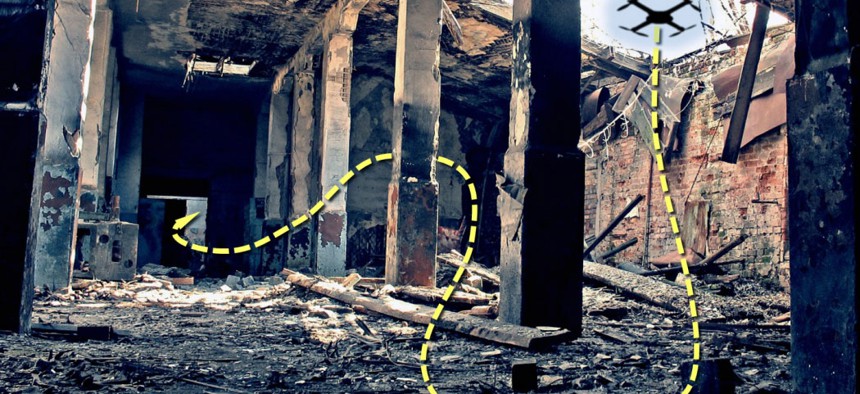Creative challenge seeks ways to counter small drones
The Mitre Corp. is running a contest for companies and individuals to demonstrate solutions that can be deployed in urban environments to detect and interdict small UAVs.
In light of the potential threat from small, inexpensive commercial drones in urban areas, one non-profit, federally funded research and development center is seeking to tackle the problem head on.
The Mitre Corp. has launched a challenge open to anyone 18 and older, companies and organizations of all sizes (except those on the Commerce Department’s restricted list or sanctioned by the U.S. government) seeking solutions to detect and safely interdict (meaning safe recovery in an area with low collateral damage with payloads still intact) small unmanned aerial systems weighing less than 5 pounds that pose a safety or security threat in urban areas.
There are three prizes up for grabs, with the potential for one participant to win all three. The best end-to-end system will win $60,000, the best detection system will win $20,000 and the best interdiction system will win $20,000.
According to Mitre’s notice, most research sanctioned by the government on counter-UAS technologies is focused on military force-protection, which might not be applicable in an urban domestic environment such as a major city or sport stadium venue. As such, the challenge has established a four-pronged criteria list for desired solutions. First, solutions must be aligned with domestic and legal requirements, which means it should be able to be deployed in highly populated regions, eschewing kinetic counter-measures such as guns, explosives, missiles or lasers, as well as jamming, which is also domestically. Second, solutions should be affordable to allow for wide-scale deployment. Third, they must be technologically scalable, able to protect against multiple aircraft and aircraft designed to evade detection, as well as adaptable to future threats. Finally, solutions must be innovate, offering unique ideas or value.
The challenge will take place in two phases, with the first requiring white paper submissions outlining solutions and approach due by Feb. 7. Panels of experts from both Mitre and the federal government will select proposals to move on to Phase 2, which will consist of live flight evaluations scheduled for the fall of 2016.
“MITRE believes, as does the federal government, that challenges and prize competitions are a creative approach to identifying and nurturing diverse potential solutions to a critical national problem,” the notice said. Results will be shared with government agencies such as the Defense Department.





